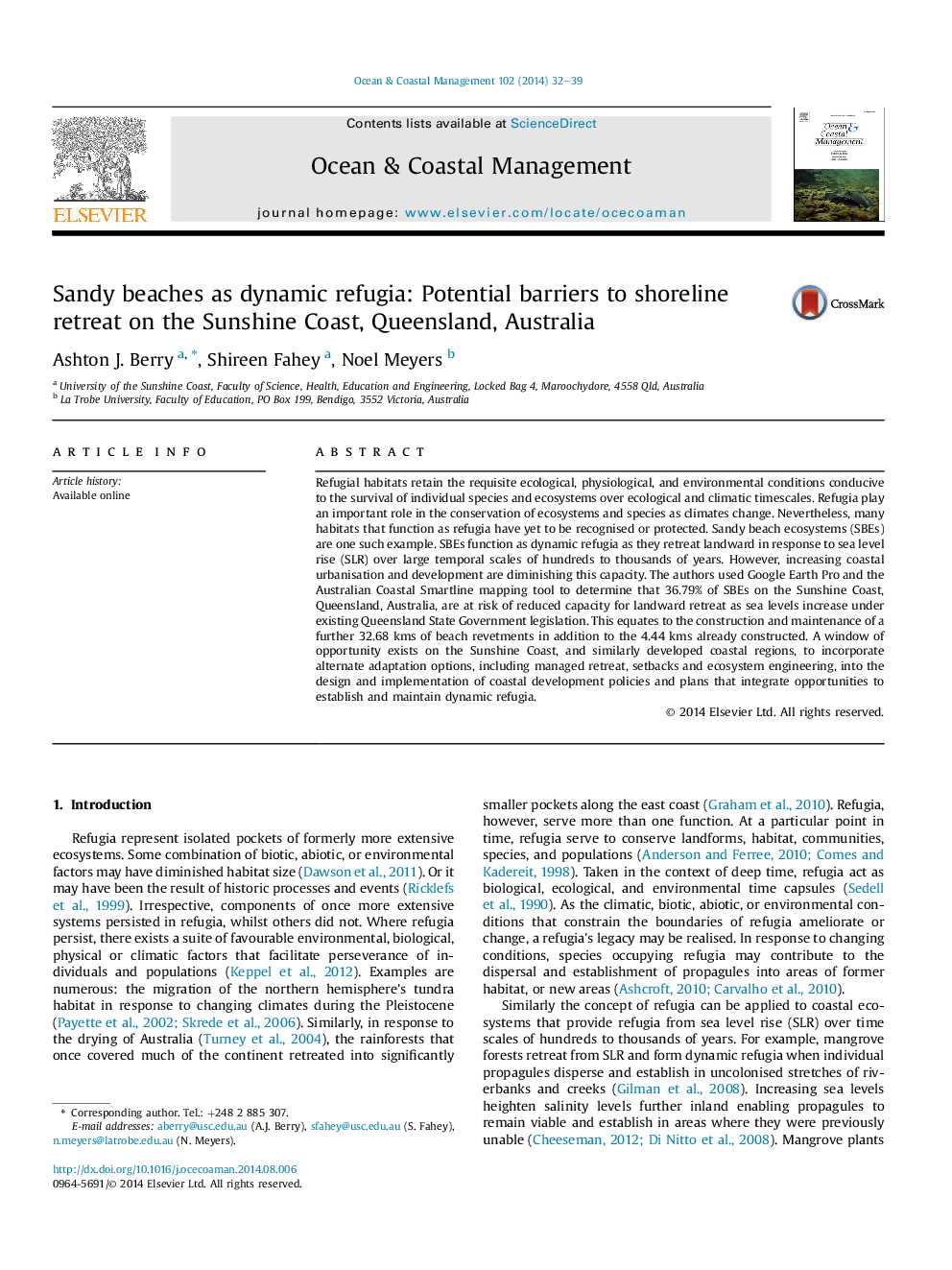| Article ID | Journal | Published Year | Pages | File Type |
|---|---|---|---|---|
| 10682146 | Ocean & Coastal Management | 2014 | 8 Pages |
Abstract
Refugial habitats retain the requisite ecological, physiological, and environmental conditions conducive to the survival of individual species and ecosystems over ecological and climatic timescales. Refugia play an important role in the conservation of ecosystems and species as climates change. Nevertheless, many habitats that function as refugia have yet to be recognised or protected. Sandy beach ecosystems (SBEs) are one such example. SBEs function as dynamic refugia as they retreat landward in response to sea level rise (SLR) over large temporal scales of hundreds to thousands of years. However, increasing coastal urbanisation and development are diminishing this capacity. The authors used Google Earth Pro and the Australian Coastal Smartline mapping tool to determine that 36.79% of SBEs on the Sunshine Coast, Queensland, Australia, are at risk of reduced capacity for landward retreat as sea levels increase under existing Queensland State Government legislation. This equates to the construction and maintenance of a further 32.68Â kms of beach revetments in addition to the 4.44Â kms already constructed. A window of opportunity exists on the Sunshine Coast, and similarly developed coastal regions, to incorporate alternate adaptation options, including managed retreat, setbacks and ecosystem engineering, into the design and implementation of coastal development policies and plans that integrate opportunities to establish and maintain dynamic refugia.
Related Topics
Physical Sciences and Engineering
Earth and Planetary Sciences
Oceanography
Authors
Ashton J. Berry, Shireen Fahey, Noel Meyers,
